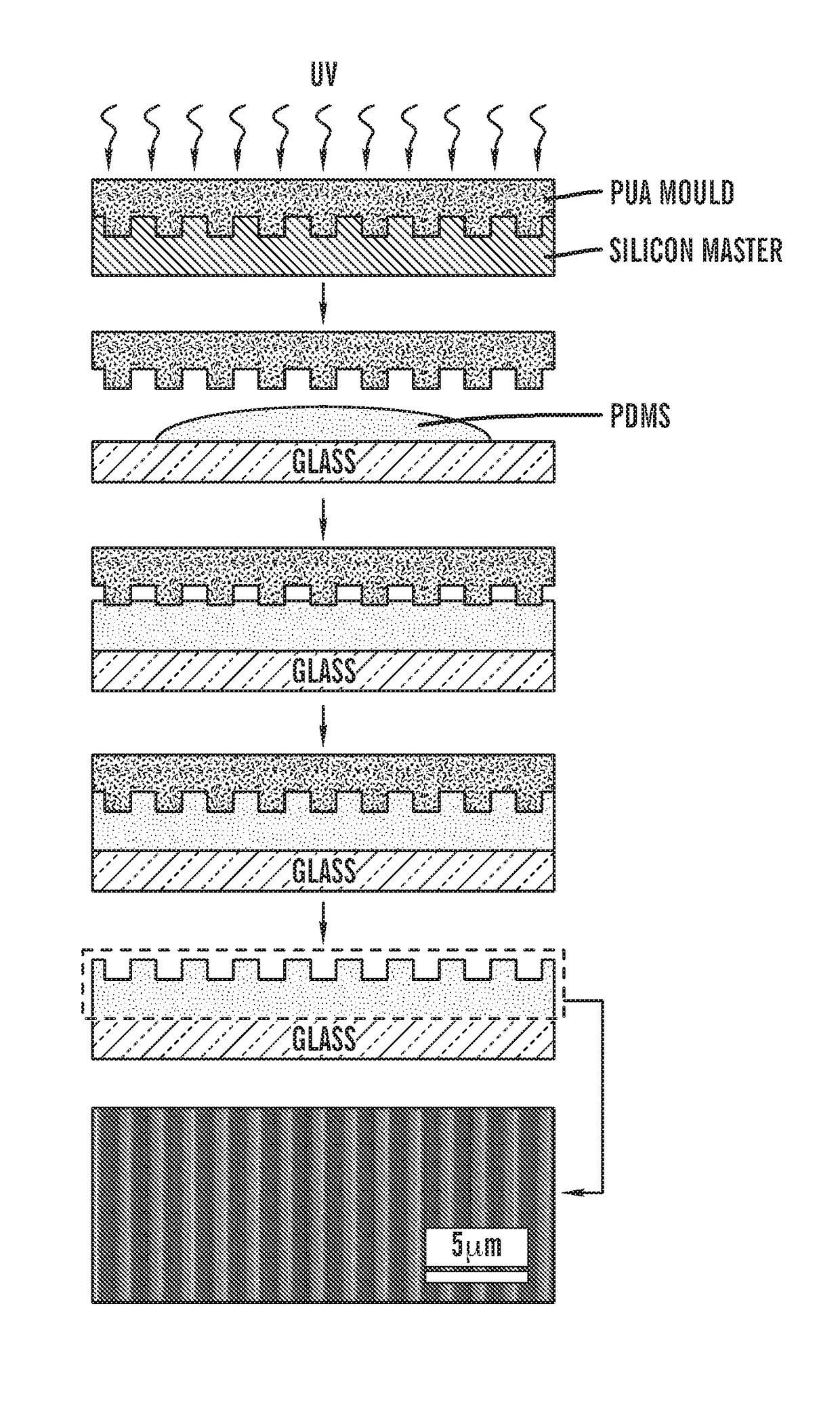Micro-and nanopatterned substrates for cell migration and uses thereof
a micro- and nano-patterned technology, applied in the field of cell growth and tissue engineering, can solve the problems of difficult identification and control of metastatic cells, limited treatment dosages, and high difficulty in treating, so as to promote directed cell migration of tumor cells and enhance cell migration speed
- Summary
- Abstract
- Description
- Claims
- Application Information
AI Technical Summary
Benefits of technology
Problems solved by technology
Method used
Image
Examples
example 1
[0518]The malignant progression of breast tumors is a multi-step process driven by specific oncogenic alterations and loss of tumor suppressor gene function (Hanahan et al., 2011, Cell, 144, 646-674). In particular, the PI3K pathway is frequently dysregulated in numerous malignancies17-19, making it an attractive target for cancer therapy. Indeed, PI3K is the subject of therapeutic exploitation along with other key downstream effectors (e.g. AKT, mTOR etc.), as PI3K pathway signaling regulates numerous critical behaviors required of transformed cells, including growth, survival and invasion22,23. Recent studies show that PIK3CA, the p110α catalytic subunit of PI3K, is frequently mutated in a number of different human cancers, including those of the breast17-19. Interestingly, the recent success of generating PIK3CA knockin modification in human breast epithelial cells provides an excellent cancer model to investigate the role of PI3K signaling in breast cancer and identify new thera...
example 2
[0527]Nanoscale Contact Guidance Cues Promote Directed Collective Cell Migration
[0528]The inventors' previous studies demonstrated that substrate nanotopography allows cardiac cells to align along the nanogroove direction and promotes cellular attachment51,59. Here, the inventors have quantitatively determined the influence of the combination of nanotopology and multiscale cues (e.g., micropatterns of the ECM coated migration pathways) on cells, for example, cells with and without an intrinsic perturbation (i.e. oncogenic mutation). First, straight-edged monolayers (1 mm wide, 14 mm long) of the breast epithelial cell line MCF-10A and its derivative, knockin of mutant PIK3CA, were generated on the ECM-coated elastomeric substrates using stencil-assisted plasma lithography as shown in FIG. 2. When the cell monolayer of MCF-10A breast epithelial cells, or PIK3CA cells occurred in the cell loading region, the barrier preventing access of the cells to the migration pathways was removed ...
example 3
[0531]The Width of Micronscale ECM-Coated Migration Pathways Influences Directed Cell Migration.
[0532]The inventors biomimetic culture platform disclosed herein not only promotes increased cell migration speed and persistence via nanoscale contact guidance cues, but also facilitates the identification of significant differences in migration of cells as a function of varying microscale geometric constraints achieved by the ECM-coated migration pathways.
[0533]To further explore the influence of multiscale cues imparted by the ECM-coated migration pathways, nanogrooved substrates were created with different microscale migration pathway widths by using PDMS microstamp-assisted plasma lithography. This enabled the inventors to create spatial migration pathway patterning on the surface of the nanotextured substrate that mimics the characteristic heterogeneity found within the normal and diseased in vivo tissue environment67. As an exemplary example, the inventors generated a nanopatterned...
PUM
 Login to View More
Login to View More Abstract
Description
Claims
Application Information
 Login to View More
Login to View More - R&D
- Intellectual Property
- Life Sciences
- Materials
- Tech Scout
- Unparalleled Data Quality
- Higher Quality Content
- 60% Fewer Hallucinations
Browse by: Latest US Patents, China's latest patents, Technical Efficacy Thesaurus, Application Domain, Technology Topic, Popular Technical Reports.
© 2025 PatSnap. All rights reserved.Legal|Privacy policy|Modern Slavery Act Transparency Statement|Sitemap|About US| Contact US: help@patsnap.com



